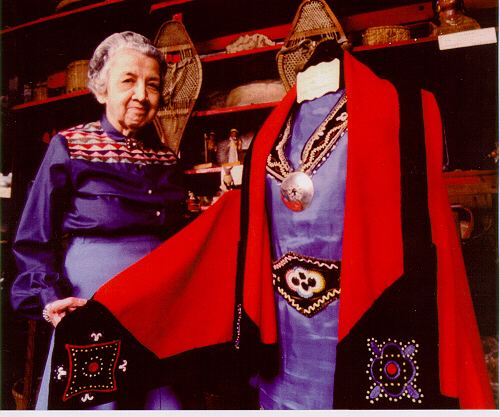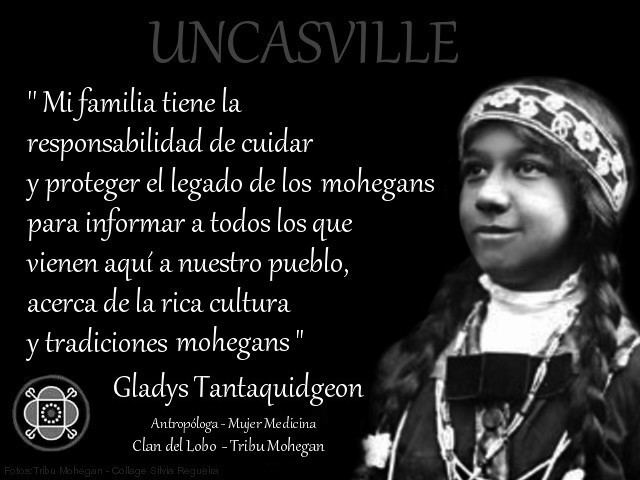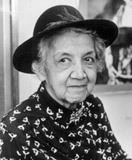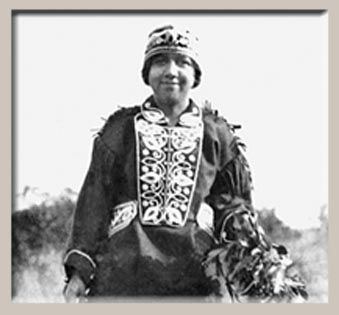Ethnicity Mohegan Name Gladys Tantaquidgeon | Role Author | |
 | ||
Full Name Gladys Iola Tantaquidgeon Occupation Native American anthropologist, Medicine Woman, social worker, author Known for Preserving traditional Mohegan spirituality, Native ceremonies and artforms Died November 1, 2005, Uncasville, Connecticut, United States Books Folk Medicine of the Delaware and Related Algonkian Indians | ||
Gladys Iola Tantaquidgeon (June 15, 1899 – November 1, 2005) was a Mohegan medicine woman, anthropologist, author, tribal council member, and elder based in Connecticut.
Contents

As a young girl, she was selected by women elders for training in traditional pharmacology and culture. She studied anthropology at the University of Pennsylvania with Frank Speck. Beginning in 1934, Tantaquidgeon worked with the Bureau of Indian Affairs for more than a decade, including several years among western Native American tribes. Together with her father and brother, in 1931 she founded the Tantaquidgeon Indian Museum, the oldest to be owned and operated by Native Americans. She published several books about Native American traditional medicine and healing with plants. For years she preserved vital records and correspondence of tribal members, which proved integral to their making the case for federal recognition, which the Mohegan received in 1994. That year, Tantaquidgeon was inducted into the Connecticut Women's Hall of Fame.

Biography

Gladys Tantaquidgeon, was the third of seven children born to Mohegan parents, John and Harriet Fielding Tantaquidgeon. They lived on Mohegan Hill in Quinnetucket (Uncasville, in New London County, Connecticut). She was a 10th-generation descendant of the Mohegan chief Uncas, who was prominent in the colonial era. The Mohegan were among tribes who spoke one of the many Algonquian languages.

In childhood, Gladys learned traditional practices, beliefs, and lore from nanus, respected women elders. By age five, the tribal nanus had chosen her to be schooled in the traditions of Mohegan culture. One of her mentors was the Mohegan traditionalist Fidelia Fielding (1827–1908). From Fielding, she learned the ways of the makiawisug who guard the healing plants.

Another mentor was her maternal aunt, Nanu Emma Fielding Baker (1828-1916). In 1992 Baker was posthumously elected by the tribe as the Mohegan Tribal Medicine Woman and was inducted into the Connecticut Women's Hall of Fame for her work in education and preservation. Gladys started studying with her aunt in 1904, specializing in traditional herbal medicine. In her youth, Gladys had only occasional non-Indian education and never attended high school.
In 1919, at the age of 20, Tantaquidgeon attended the University of Pennsylvania to study anthropology. The scholar Frank Speck had met her as a child while he worked with her nanu Fidelia Fielding. When she was old enough, he invited her to study with him at Penn; he arranged work for her support, housing with foreign students, and classes and fieldwork to broaden her understanding of Native American cultures. Tantaquidgeon later did field work related to the Lenape and other eastern Algonquian tribes. She expanded her knowledge of traditional pharmacopeia by researching herbal medicine practices among many related East Coast tribes.
From 1934 to 1947, at the time of the Indian Reorganization Act and the Indian New Deal under the administration of President Franklin D. Roosevelt, Tantaquidgeon started work with the US Bureau of Indian Affairs. She was hired in 1934 under the Wheeler-Howard Act to administer social service benefits for Indians. At first she was assigned to the Yankton Sioux Indian Reservation in South Dakota.
In 1938 she transferred to the Indian Arts and Crafts Board to serve as a "Native Arts Specialist". Working in the Dakotas, Montana and Wyoming, she helped indigenous artisans preserve traditional skills and arts. In addition, she helped them form cooperatives and other institutions for the sale and management of their arts. She developed ways for tribes to revive their cultural practices. According to the Mohegan Tribal Historian Melissa Fawcett, while working for the federal Indian Arts and Crafts Board, Tantaquidgeon also helped preserve customs that had been prohibited in the 19th century, such as the Ghost Dance and the Sun Dance. Part of Tantaquidgeon's job was to encourage the restoration of these and other previously prohibited traditional practices.
In 1931, Tantaquidgeon worked with her brother Harry, a former chief, and father John to found the Tantaquidgeon Indian Museum. It is the oldest such museum to be owned and operated by Native Americans. After concluding her government service in 1947, Tantaquidgeon returned to Mohegan Hill, Uncasville. She worked full-time at the museum for the next 50 years, until 1998.
As a librarian in the Niantic Women’s Prison in the late 1940s, Tantaquidgeon had helped minority women. During the 1970s and 1980s, she also served on the Mohegan Tribal Council, encouraging the preservation and revival of tribal customs and language.
She published several books in her lifetime about traditional herbal medicine. Her best-known work, A Study of Delaware Indian Medicine Practices and Folk Beliefs (1942), was reprinted in 1972, 1995 and 2000 as Folk Medicine of the Delaware and Related Algonkian Indians. In 1992 she was elected as the Tribal Medicine Woman of the Mohegan.
Tantaquidgeon preserved numerous records and tribal correspondence in boxes under her bed. These proved critical as documentation to aid the tribe's case for federal recognition. As a people without a reservation, they had to prove community continuity. They gained federal recognition in 1994 as part of a settlement of their land claim, under a bill by Congress.
Dr. Gladys Tantaquidgeon was the great-aunt of Melissa Tantaquidgeon Zobel, an author and the current Mohegan Medicine Woman.
